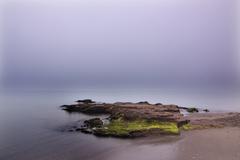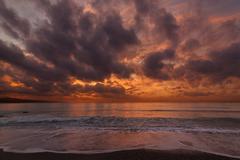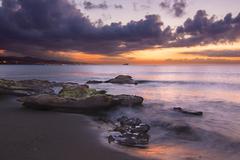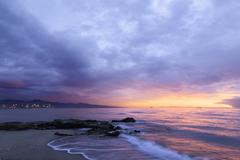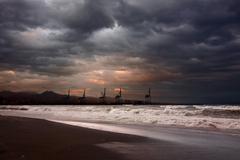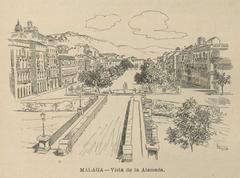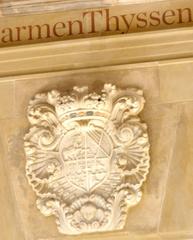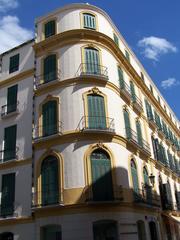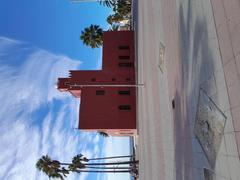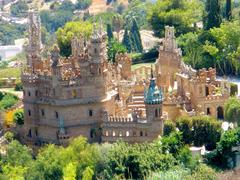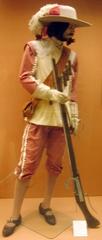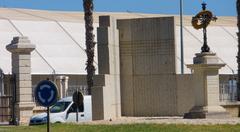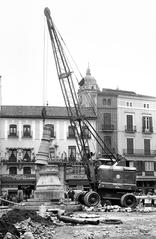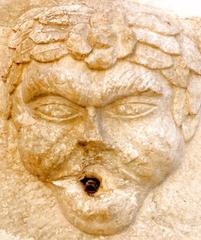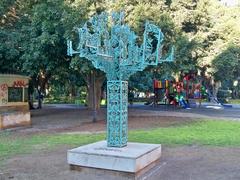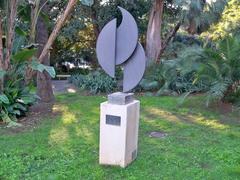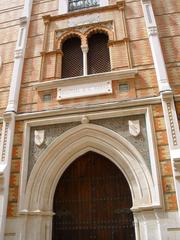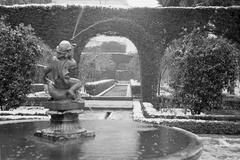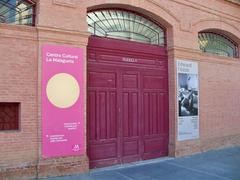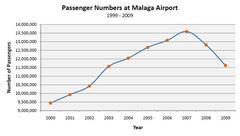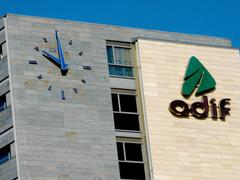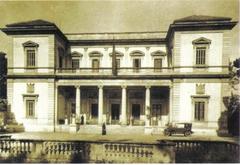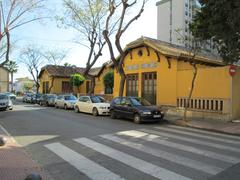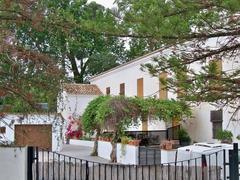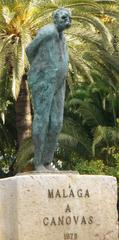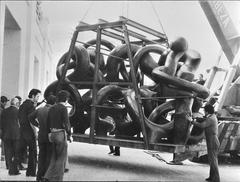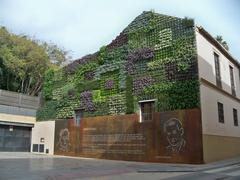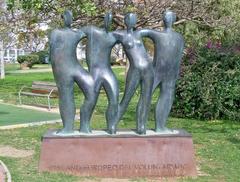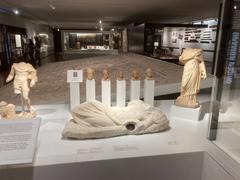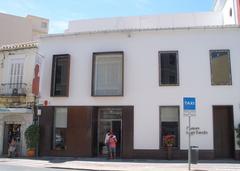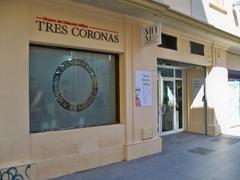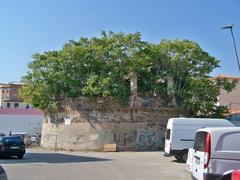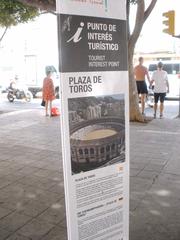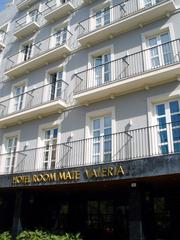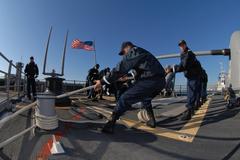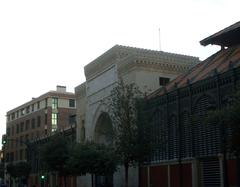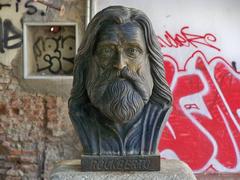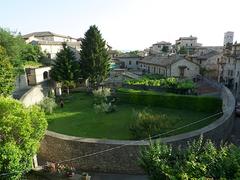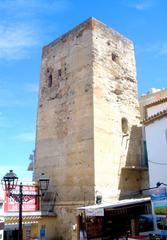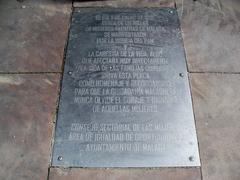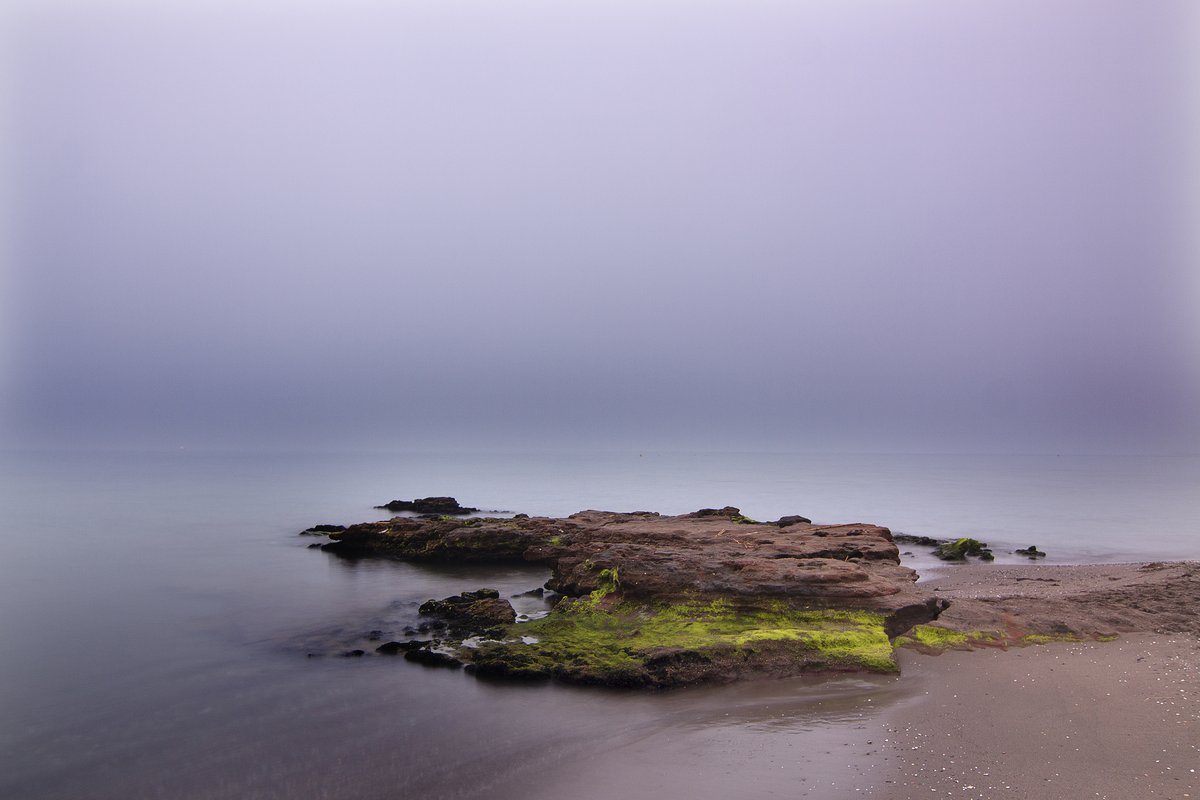
La Campana Playa Visiting Hours, Tickets, and Tips
Date: 18/07/2024
Introduction to La Campana Playa
Welcome to La Campana Playa, a stunning beach destination located in the heart of Málaga, Spain. Known for its pristine sandy shores, crystal-clear waters, and rich cultural heritage, La Campana Playa offers a unique blend of natural beauty and historical significance. This guide aims to provide you with everything you need to know about visiting La Campana Playa, from its intriguing historical background to practical travel tips, nearby attractions, and more. Whether you’re a history enthusiast, a cultural explorer, or simply looking for a relaxing getaway, La Campana Playa has something for everyone. The history of Málaga dates back to ancient times, beginning with the Phoenicians around 770 BC, and has seen a myriad of influences from the Romans, Moors, and later the Catholic Monarchs (Málaga History). This rich tapestry of cultural and historical influences is evident in the landmarks and traditions that continue to shape the region today. So pack your bags and join us as we explore the wonders of La Campana Playa, a destination that promises to leave you with unforgettable memories.
Table of Contents
- Introduction
- Historical Background
- Visiting La Campana Playa
- Cultural Significance
- Environmental Significance
- Economic and Social Significance
- Educational and Recreational Significance
- FAQ
- Conclusion
- Sources
Historical Background
Early History and Origins
La Campana Playa, located in Málaga, Spain, has a history that dates back to ancient times. The region of Málaga itself has been inhabited for nearly 2,800 years, making it one of the oldest cities in Europe. The area around La Campana Playa was initially settled by the Phoenicians around 770 BC, who established a trading post known as Malaka. This early settlement was strategically located due to its proximity to the Mediterranean Sea, facilitating trade and cultural exchange with other ancient civilizations (Málaga History).
Roman Influence
Following the decline of the Phoenician civilization, the Romans took control of the region in 218 BC. Under Roman rule, Málaga flourished as a significant port city. The Romans constructed various infrastructures, including roads, aqueducts, and public buildings, some of which have left their mark on the area surrounding La Campana Playa. The Roman theater in Málaga, built in the 1st century BC, is a testament to the city’s historical significance during this period (Roman Theater Málaga).
Moorish Period
The arrival of the Moors in 711 AD marked a new chapter in the history of Málaga and La Campana Playa. The Moors, who were of North African descent, brought with them advanced agricultural techniques, architectural styles, and a rich cultural heritage. Málaga became an important city within the Emirate of Córdoba and later the Caliphate of Córdoba. The Alcazaba fortress, constructed in the 11th century, is one of the most prominent remnants of Moorish architecture in the region. This period also saw the development of the local fishing industry, which would have included areas like La Campana Playa (Alcazaba of Málaga).
Reconquista and Christian Rule
In 1487, Málaga was conquered by the Catholic Monarchs, Ferdinand and Isabella, during the Reconquista. This event marked the end of Moorish rule and the beginning of a new era under Christian governance. The city underwent significant changes, including the construction of new religious and civic buildings. The Cathedral of Málaga, also known as La Manquita, was built on the site of a former mosque and remains a symbol of the city’s transformation during this period (Málaga Cathedral).
19th and 20th Century Developments
The 19th century brought industrialization to Málaga, which had a profound impact on the region, including La Campana Playa. The city became a hub for the production of wine, raisins, and other agricultural products. The construction of the Málaga port in the late 19th century further boosted the local economy and facilitated international trade. During this period, La Campana Playa began to develop as a recreational area, attracting both locals and visitors.
The 20th century saw further modernization and urbanization of Málaga. The Spanish Civil War (1936-1939) and subsequent Francoist dictatorship had significant social and economic impacts on the region. However, the latter half of the century witnessed a resurgence in tourism, with Málaga and its beaches, including La Campana Playa, becoming popular destinations for both domestic and international tourists (Málaga Tourism).
Visiting La Campana Playa
Visiting Hours and Tickets
La Campana Playa is accessible to the public year-round. While there are no specific visiting hours for the beach itself, nearby attractions such as the Alcazaba fortress and the Roman theater have set hours and may require tickets. Visitors are encouraged to check the official tourism website of Andalucía for the most up-to-date information on visiting hours and ticket prices for these historical sites.
Travel Tips
- Best Time to Visit: The ideal time to visit La Campana Playa is during the spring and fall months when the weather is pleasant, and the beach is less crowded.
- Getting There: Málaga is well-connected by train, bus, and air. Once in Málaga, La Campana Playa is easily accessible by local transport or a short drive.
- Nearby Attractions: Don’t miss out on visiting the Alcazaba fortress, the Roman theater, and the Cathedral of Málaga. These sites offer a glimpse into the city’s rich history and are located within a short distance from La Campana Playa.
- Accessibility: La Campana Playa is equipped with amenities to cater to visitors with disabilities, including accessible pathways and restrooms.
- Special Events: Check the local event calendar for special activities and festivals that may coincide with your visit, enhancing your experience at La Campana Playa.
- Photography Spots: The beach offers numerous picturesque spots perfect for photography. The sunset views are particularly stunning, providing an ideal backdrop for memorable photos.
Cultural Significance
La Campana Playa is a cultural melting pot, reflecting the diverse influences that have shaped Málaga over the centuries. The beach is a popular spot for local festivals and events, which are deeply rooted in the traditions and customs of the region. One of the most significant events is the Feria de Málaga, held in August, which includes beach parties, traditional music, and dance performances. This festival attracts thousands of visitors and showcases the vibrant culture of Málaga (Feria de Málaga).
The beach is also a hub for local artists and musicians who often perform along the promenade. The presence of various art installations and sculptures along the beach adds to its cultural significance. These artworks often depict the history and traditions of Málaga, making La Campana Playa a living museum of sorts (Málaga Art).
Environmental Significance
La Campana Playa is part of the Costa del Sol, known for its unique coastal ecosystem. Efforts have been made to preserve the natural beauty and biodiversity of the area. The beach is home to various species of marine life and birds, making it a popular spot for eco-tourism and bird-watching (Costa del Sol Biodiversity).
The local government has implemented several measures to protect the beach from pollution and overdevelopment. These include regular beach clean-ups, restrictions on construction, and initiatives to promote sustainable tourism. The Blue Flag status awarded to La Campana Playa is a testament to its environmental significance and the efforts made to maintain its pristine condition (Blue Flag Beaches).
Economic and Social Significance
La Campana Playa plays a crucial role in the local economy of Málaga. The beach attracts thousands of tourists every year, contributing significantly to the tourism industry. The influx of visitors has led to the development of various businesses, including hotels, restaurants, and shops, providing employment opportunities for the local population (Málaga Tourism).
The beach is also a popular spot for water sports and recreational activities, which generate additional revenue. Activities such as jet skiing, paddleboarding, and beach volleyball are popular among tourists and locals alike. The economic impact of these activities is substantial, contributing to the overall prosperity of the region (Water Sports in Málaga).
La Campana Playa also serves as a social hub for the local community. It is a place where people of all ages come together to relax, socialize, and enjoy the natural beauty of the beach. The beach is equipped with various amenities, including playgrounds, picnic areas, and sports facilities, making it a popular spot for families and groups of friends (Málaga Beaches).
The beach also plays a role in promoting a healthy lifestyle among the local population. The availability of outdoor gyms, jogging tracks, and yoga sessions encourages people to engage in physical activities. The social interactions and community events held at the beach foster a sense of belonging and community spirit among the residents of Málaga (Healthy Living in Málaga).
Educational and Recreational Significance
La Campana Playa is an important educational resource for both locals and tourists. Various educational programs and workshops are conducted at the beach, focusing on topics such as marine biology, environmental conservation, and local history. These programs are often organized in collaboration with local schools, universities, and environmental organizations (Educational Programs in Málaga).
The beach also serves as a field site for research and studies related to coastal ecosystems and marine life. Researchers and students from around the world visit La Campana Playa to study its unique environment and contribute to the body of knowledge on coastal conservation (Marine Research in Málaga).
La Campana Playa is a popular destination for recreational activities. The beach offers a wide range of activities, including swimming, sunbathing, beach sports, and water sports. The availability of rental equipment and facilities makes it easy for visitors to engage in these activities. The beach is also known for its vibrant nightlife, with numerous beach bars and clubs offering entertainment until the early hours of the morning (Málaga Nightlife).
The beach’s promenade is a popular spot for leisurely walks, cycling, and rollerblading. The scenic views of the Mediterranean Sea and the pleasant climate make it an ideal place for outdoor activities. The presence of various cafes and restaurants along the promenade allows visitors to enjoy local cuisine while taking in the beautiful surroundings (Málaga Promenade).
FAQ
Q: What are the visiting hours for La Campana Playa?
A: La Campana Playa is open 24/7.
Q: Is there an entry fee for La Campana Playa?
A: No, there is no entry fee.
Q: What is the best time to visit La Campana Playa?
A: The best time to visit is during the spring and fall months when the weather is pleasant and the beach is less crowded.
Q: How can I get to La Campana Playa?
A: The beach is easily accessible by public transport, including buses and taxis from the city center.
Q: What are some nearby attractions?
A: Nearby attractions include the Alcazaba fortress, the Roman theater, and the Cathedral of Málaga.
Conclusion
La Campana Playa in Málaga, Spain, is a site of immense significance, encompassing historical, cultural, environmental, economic, social, educational, and recreational aspects. Its rich history, vibrant culture, and natural beauty make it a must-visit destination for tourists and a cherished spot for the local community. The efforts to preserve and promote the beach’s unique attributes ensure that it remains a valuable asset for future generations. Don’t forget to download our mobile app for more travel tips and follow us on social media to stay updated on the latest events and news about La Campana Playa.
Sources and Further Reading
- Andalucía.com, n.d., Málaga History (source)
- Andalucía.com, n.d., Roman Theater Málaga (source)
- Andalucía.com, n.d., Alcazaba of Málaga (source)
- Andalucía.com, n.d., Málaga Cathedral (source)
- Spain.info, n.d., Málaga Tourism (source)
- Andalucía.com, n.d., Moorish Influence (source)
- Andalucía.com, n.d., Feria de Málaga (source)
- Andalucía.com, n.d., Málaga Art (source)
- Andalucía.com, n.d., Costa del Sol Biodiversity (source)
- Blueflag.global, n.d., Blue Flag Beaches (source)
- Andalucía.com, n.d., Málaga Beaches (source)
- Andalucía.com, n.d., Healthy Living in Málaga (source)
- Andalucía.com, n.d., Educational Programs in Málaga (source)
- Andalucía.com, n.d., Marine Research in Málaga (source)
- Andalucía.com, n.d., Málaga Nightlife (source)
- Andalucía.com, n.d., Málaga Promenade (source)
- Eltintero.eu, n.d., El Tintero (source)
- Elbalneariomalaga.com, n.d., El Balneario (source)
- Lamachina.es, n.d., La Machina (source)
- Malagaturismo.com, n.d., Alcazaba (source)
- Museopicassomalaga.org, n.d., Picasso Museum (source)
- Muelleuno.com, n.d., Muelle Uno (source)
